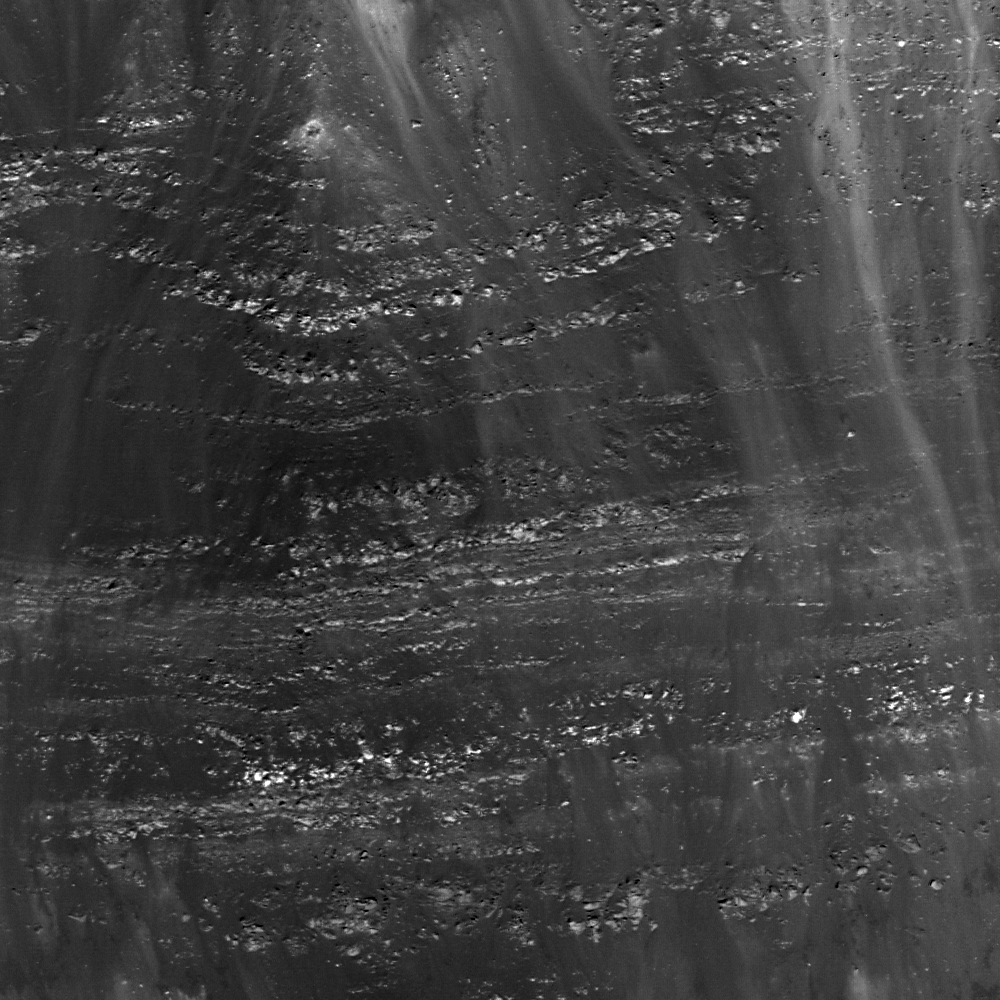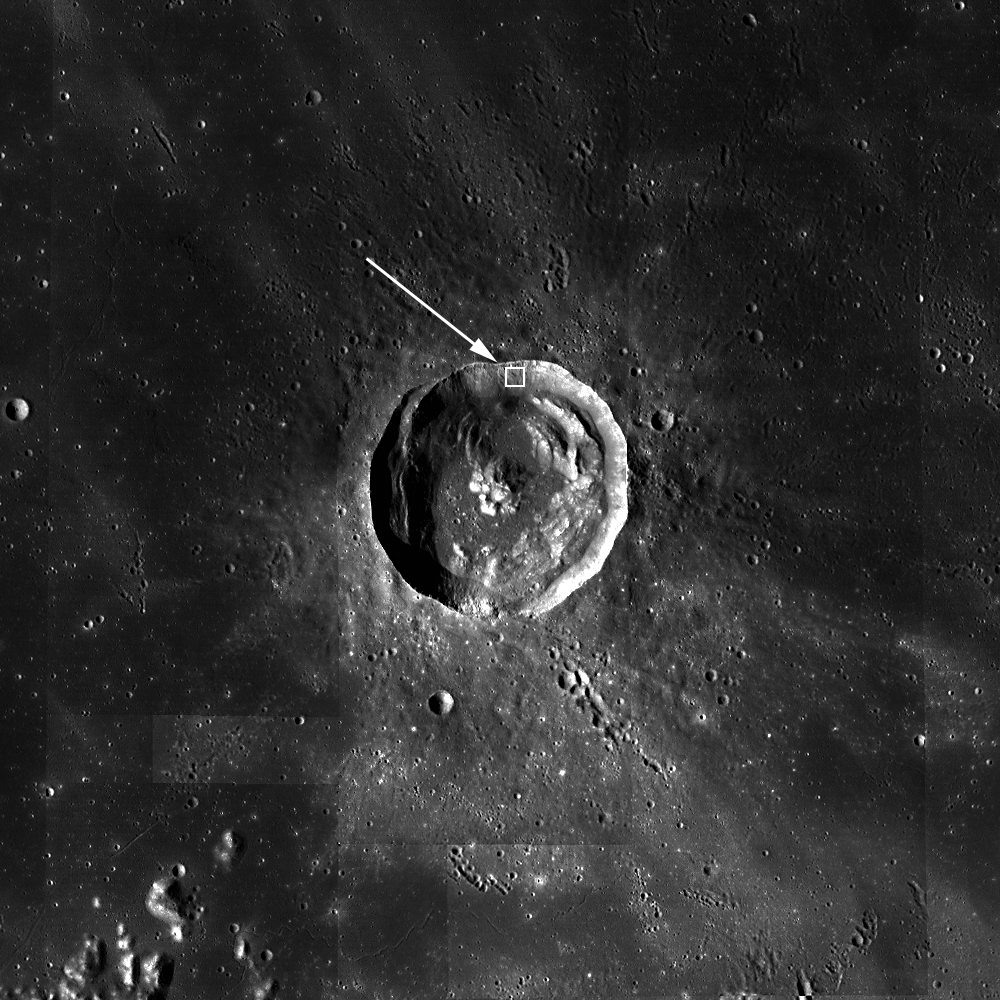
Euler crater is located in Mare Imbrium (23.2°N, 330.8°E) and named for the 18th century mathematician. Mare Imbrium is one of the lunar basins that was filled with floods of basalt. But how were these mare deposits emplaced? Because the impact cratering process can often expose the underlying geology, impact craters are a great place to search for clues to how the basalts were emplaced. However, the post-impact processes that occur, such as mass wasting and slumping of crater walls, undermines this ability over time.
Luckily for us, Euler crater is fresh enough that it still has exposed layers of Mare Imbrium. We can even measure the thickness of individual layers, and many are between 3 and 12 m. The layers reveal that the lunar maria were deposited as many thin individual flood lava flows. Similar processes formed the Columbia River Basalts on Earth. Several other craters in the lunar maria exhibit layering, as do the pit craters. These observations all reinforce the lava flow interpretation.
How many layers can you count in the full NAC frame?
Related Posts: Layering in Messier A
Published by Drew Enns on 2 August 2011
